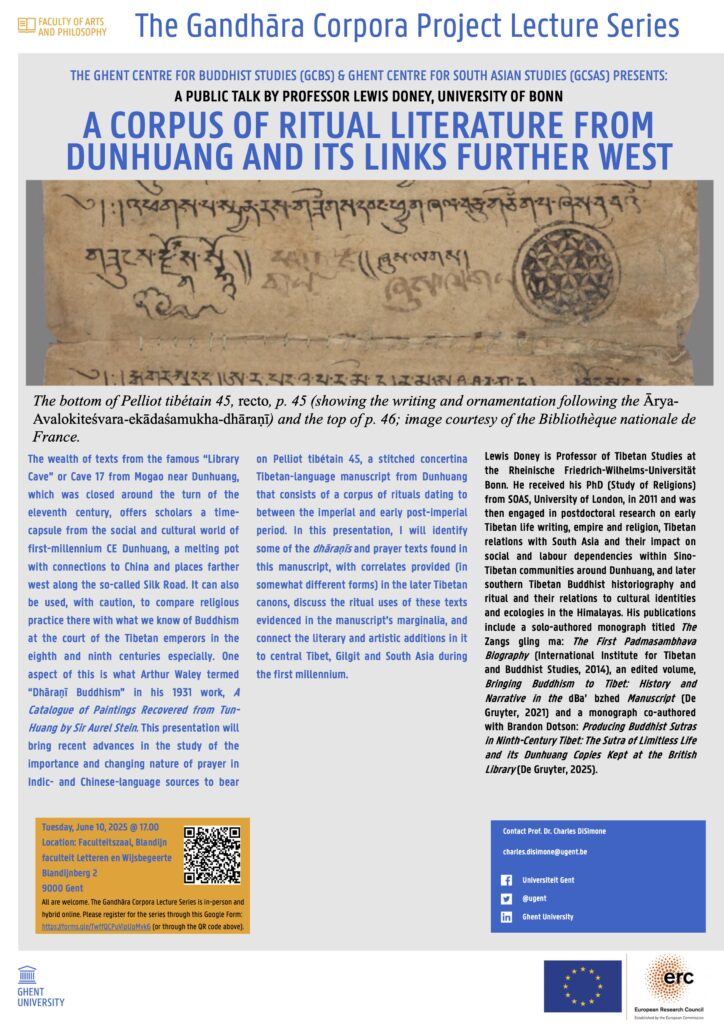Time & venue
- Tuesday, 10 June 2025, 17:00 (5pm) CET
- Location: Faculteitszaal, Faculteit Letteren en Wijsbegeerte, Blandijnberg 2, 9000 Gent
- To attend remotely, please register through this Google Form: https://forms.gle/TwffQCPuVipUpMvk6
Abstract
The wealth of texts from the famous “Library Cave” or Cave 17 from Mogao near Dunhuang, which was closed around the turn of the eleventh century, offers scholars a time-capsule from the social and cultural world of first-millennium CE Dunhuang, a melting pot with connections to China and places farther west along the so-called Silk Road. It can also be used, with caution, to compare religious practice there with what we know of Buddhism at the court of the Tibetan emperors in the eighth and ninth centuries especially. One aspect of this is what Arthur Waley termed “Dhāraṇī Buddhism” in his 1931 work, A Catalogue of Paintings Recovered from Tun-Huang by Sir Aurel Stein. This presentation will bring recent advances in the study of the importance and changing nature of prayer in Indic- and Chinese-language sources to bear on Pelliot tibétain 45, a stitched concertina Tibetan-language manuscript from Dunhuang that consists of a corpus of rituals dating to between the imperial and early post-imperial period. In this presentation, I will identify some of the dhāraṇīs and prayer texts found in this manuscript, with correlates provided (in somewhat different forms) in the later Tibetan canons, discuss the ritual uses of these texts evidenced in the manuscript’s marginalia, and connect the literary and artistic additions in it to central Tibet, Gilgit and South Asia during the first millennium.
Bio
